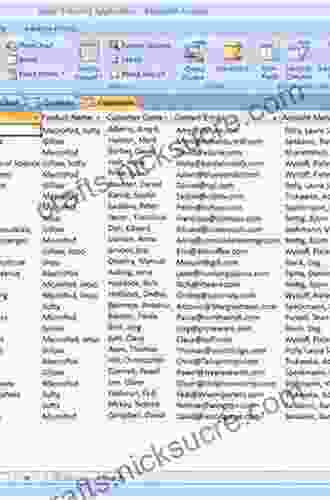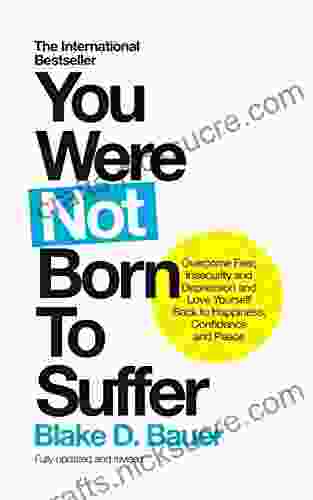Unlocking the Power of Data with Practical Entity Framework Core: A Comprehensive Guide

Entity Framework Core (EF Core) is a powerful Object-Relational Mapping (ORM) framework that bridges the gap between relational databases and object-oriented programming languages like C#. It simplifies data access and manipulation by providing an abstraction layer that translates between the two worlds, making it easier to work with data in a consistent and efficient manner.
This comprehensive guide is designed to provide a thorough understanding of EF Core, from its foundational concepts to advanced techniques. Whether you're a beginner who is just getting started with EF Core or an experienced developer looking to enhance your skills, this guide will equip you with the knowledge and skills to maximize the potential of EF Core in your applications.
Object-Relational Mapping (ORM)
EF Core is an ORM framework, which means it translates between the object-oriented representation of data in your code and the relational representation stored in the database. This allows you to work with data using objects and classes, rather than having to manually write SQL queries and manage database connections.
4.7 out of 5
| Language | : | English |
| File size | : | 92122 KB |
| Text-to-Speech | : | Enabled |
| Screen Reader | : | Supported |
| Enhanced typesetting | : | Enabled |
| Print length | : | 1018 pages |
Entities
Entities are the core building blocks of EF Core. They represent real-world objects, such as customers, orders, or products, and are mapped to database tables. Each entity has a unique identifier (ID) and properties that correspond to the columns in the database table.
DbContext
The DbContext class is the central point of interaction with the database. It represents a session with the database and provides methods for querying, inserting, updating, and deleting data. The DbContext is responsible for tracking changes made to entities and propagating those changes to the database when SaveChanges() is called.
Code First, Database First, and Model First
EF Core supports three different approaches to data modeling:
- Code First: Start with C# classes and let EF Core create the database schema based on those classes.
- Database First: Start with an existing database and generate C# classes based on the database schema.
- Model First: Use a modeling tool to design a data model and generate both C# classes and a database schema from that model.
To get started with EF Core, you'll need to install the Entity Framework Core NuGet package into your project. Once installed, you can create a DbContext class that represents your database context. The DbContext class should inherit from the Microsoft.EntityFrameworkCore.DbContext base class.
csharp public class MyDbContext : DbContext { public DbSet Customers { get; set; }public DbSet Orders { get; set; }public DbSet Products { get; set; }}
The DbContext class defines DbSet properties for each entity type that you want to work with. The DbSet property represents a collection of entities that are stored in the database table corresponding to that entity type.
EF Core provides a powerful query language called LINQ (Language Integrated Query) that allows you to query data using C# syntax. LINQ queries can be used to retrieve, filter, sort, and aggregate data from the database.
csharp var customers = context.Customers.ToList();
// Retrieve all customers with the last name "Smith" var smithCustomers = context.Customers.Where(c => c.LastName == "Smith").ToList();
var totalOrders = context.Orders.Count();
EF Core automatically tracks changes made to entities that are loaded from the database. When you modify an entity property, EF Core will mark the entity as "modified" and will propagate those changes to the database when SaveChanges() is called.
csharp var customer = context.Customers.Find(1); customer.Address = "123 Main Street";
context.SaveChanges();
Beyond the basics, EF Core offers a wide range of advanced techniques that can enhance the performance and functionality of your applications:
- Lazy Loading: Retrieve related data only when it is needed, reducing the amount of data that is transferred between the database and the application.
- Eager Loading: Retrieve related data upfront, improving performance for scenarios where you know that you will need that data.
- Change Tracking: Keep track of changes made to entities, allowing you to selectively update or delete data.
- Transactions: Group multiple database operations into a single unit of work, ensuring that all operations either succeed or fail together.
- Custom Queries: Write raw SQL queries or stored procedures and execute them using EF Core's query execution API.
Entity Framework Core is a powerful tool that can significantly simplify data access and management in .NET applications. By understanding the key concepts and techniques covered in this guide, you can unlock the full potential of EF Core and build data-driven applications with confidence and efficiency.
Remember, the journey to mastering EF Core is an ongoing one. Stay up-to-date with the latest features and best practices by reading the official documentation, attending conferences, and engaging with the EF Core community.
With persistence and a dedication to continuous learning, you can become an expert in Entity Framework Core and harness its power to create exceptional data-centric applications.
4.7 out of 5
| Language | : | English |
| File size | : | 92122 KB |
| Text-to-Speech | : | Enabled |
| Screen Reader | : | Supported |
| Enhanced typesetting | : | Enabled |
| Print length | : | 1018 pages |
Do you want to contribute by writing guest posts on this blog?
Please contact us and send us a resume of previous articles that you have written.
 Fiction
Fiction Non Fiction
Non Fiction Romance
Romance Mystery
Mystery Thriller
Thriller SciFi
SciFi Fantasy
Fantasy Horror
Horror Biography
Biography Selfhelp
Selfhelp Business
Business History
History Classics
Classics Poetry
Poetry Childrens
Childrens Young Adult
Young Adult Educational
Educational Cooking
Cooking Travel
Travel Lifestyle
Lifestyle Spirituality
Spirituality Health
Health Fitness
Fitness Technology
Technology Science
Science Arts
Arts Crafts
Crafts DIY
DIY Gardening
Gardening Petcare
Petcare Hans C Ohanian
Hans C Ohanian Shannon Hale
Shannon Hale Suzanne Corkin
Suzanne Corkin David Warriner
David Warriner Iain Highfield
Iain Highfield Israel Finkelstein
Israel Finkelstein Achusim Michael
Achusim Michael Stacy Eaton
Stacy Eaton Emily J Taylor
Emily J Taylor Stephen R Lawhead
Stephen R Lawhead Aaron Mccargo
Aaron Mccargo Peter Sagal
Peter Sagal Walter Browder
Walter Browder Jeremy Shinewald
Jeremy Shinewald Laurence Steinberg
Laurence Steinberg Brandon Neice
Brandon Neice Stuart Firestein
Stuart Firestein Nick Holt
Nick Holt Phong Thong Dang
Phong Thong Dang Andrew Campanella
Andrew Campanella Adam Chandler
Adam Chandler Edward J Larson
Edward J Larson Adam Galinsky
Adam Galinsky Ron Hotchkiss
Ron Hotchkiss Jennifer Finney Boylan
Jennifer Finney Boylan Gary Sakuma
Gary Sakuma David Simon
David Simon Stephanie Puglisi
Stephanie Puglisi Maxine Levaren
Maxine Levaren Rick Sekuloski
Rick Sekuloski Matt Warshaw
Matt Warshaw Rosie Pope
Rosie Pope Daphne Poltz
Daphne Poltz Achille Rubini
Achille Rubini Bill Loguidice
Bill Loguidice Meg Keys
Meg Keys Christina Hoff Sommers
Christina Hoff Sommers Chuck Callaway
Chuck Callaway Melodie M Davis
Melodie M Davis Domenica Marchetti
Domenica Marchetti Richard Sattora
Richard Sattora Barbara Natterson Horowitz
Barbara Natterson Horowitz Stephanie Zeiss
Stephanie Zeiss Jessie Hartland
Jessie Hartland Abridged Ed Edition Kindle Edition
Abridged Ed Edition Kindle Edition Lynn Alley
Lynn Alley Megan Lane
Megan Lane Chaz Scoggins
Chaz Scoggins Michael Gruenbaum
Michael Gruenbaum Michael Crawley
Michael Crawley Thubten Yeshe
Thubten Yeshe Betsy Miller
Betsy Miller Aaron Mahnke
Aaron Mahnke Winston Chang
Winston Chang Bruce Van Brunt
Bruce Van Brunt Martha Gellhorn
Martha Gellhorn Stephen Brennan
Stephen Brennan Abu Mussab Wajdi Akkari
Abu Mussab Wajdi Akkari Adam Frank
Adam Frank Sarah Maslin Nir
Sarah Maslin Nir Axie Oh
Axie Oh Tali Edut
Tali Edut Kel Carpenter
Kel Carpenter Abby Hafer
Abby Hafer Brian L Gorman
Brian L Gorman Ian Mcleod
Ian Mcleod Virginia Smith Harvey
Virginia Smith Harvey Robert Fritz
Robert Fritz Eze Ugbor
Eze Ugbor Abigail Melton
Abigail Melton Carley Roney
Carley Roney Marc Dando
Marc Dando Renda Dionne Madrigal
Renda Dionne Madrigal Uri Bram
Uri Bram Gayle Forman
Gayle Forman G Bailey
G Bailey Katrina Kahler
Katrina Kahler Elisabetta Viggiani
Elisabetta Viggiani Michelle Obama
Michelle Obama Sasha Abramsky
Sasha Abramsky Tom Mccarthy
Tom Mccarthy Pamela Druckerman
Pamela Druckerman Lisa M Given
Lisa M Given Todd Graves
Todd Graves Jason Korol
Jason Korol Glen Finland
Glen Finland Chella Quint
Chella Quint Christopher Knight
Christopher Knight Craig Timberg
Craig Timberg Robert Allans
Robert Allans Sarah K L Wilson
Sarah K L Wilson Barry Robinson
Barry Robinson Lisa Pineda
Lisa Pineda Tim Larkin
Tim Larkin Adam J Rosh
Adam J Rosh Aaron J Perry
Aaron J Perry Roman Dial
Roman Dial Abhishek V R
Abhishek V R Leigh Bardugo
Leigh Bardugo Kristin Berry
Kristin Berry Norton Juster
Norton Juster Benjamin Roberts
Benjamin Roberts Adam Kimelman
Adam Kimelman Gerry Donohue
Gerry Donohue Barbara A Lewis
Barbara A Lewis Jennifer Greene
Jennifer Greene John Hancock
John Hancock Asato Asato
Asato Asato Kenn Kaufman
Kenn Kaufman J Robert King
J Robert King Christophe Jaffrelot
Christophe Jaffrelot Andy Dumas
Andy Dumas John D Gordon
John D Gordon Chris Worfolk
Chris Worfolk Joe Simpson
Joe Simpson Matt Owens
Matt Owens Gloria Atanmo
Gloria Atanmo Kate Rope
Kate Rope Winifred Conkling
Winifred Conkling Kim Gosselin
Kim Gosselin Deborah Madison
Deborah Madison Mark Januszewski
Mark Januszewski David Feddes
David Feddes T L Lowery
T L Lowery William Hamilton Gibson
William Hamilton Gibson Tom Migdalski
Tom Migdalski Charles L Byrne
Charles L Byrne Scott Meyers
Scott Meyers Teresa Finney
Teresa Finney Sean Lewis
Sean Lewis Emily Suzanne Clark
Emily Suzanne Clark Sarah Luddington
Sarah Luddington Abigail Hing Wen
Abigail Hing Wen Cornel West
Cornel West Stefan Ball
Stefan Ball Christopher Black
Christopher Black Sam Jarman
Sam Jarman E P Marcellin
E P Marcellin Phil Boyle
Phil Boyle Justin Driver
Justin Driver Aaron Reed Msn Crna
Aaron Reed Msn Crna Peter David
Peter David Louise Pickford
Louise Pickford Kayla Cottingham
Kayla Cottingham Jennifer Shannon
Jennifer Shannon Vikas Kakwani
Vikas Kakwani Darrin Bergman
Darrin Bergman R L Stine
R L Stine John Taylor
John Taylor Stephen Gray
Stephen Gray Vivian Gussin Paley
Vivian Gussin Paley Richard Langer
Richard Langer Devika Primic
Devika Primic Carmen Moreno
Carmen Moreno Taylan Hoca
Taylan Hoca Ned Johnson
Ned Johnson Adam Enaz
Adam Enaz Dr Robert Pasahow
Dr Robert Pasahow Farah Shabazz Ii
Farah Shabazz Ii An American Citizen
An American Citizen Mary Roach
Mary Roach Xiuhtezcatl Martinez
Xiuhtezcatl Martinez Abigail Alling
Abigail Alling Wayne Westcott
Wayne Westcott Gil Capps
Gil Capps David Winner
David Winner Annie Nicholas
Annie Nicholas Jon Butterworth
Jon Butterworth Natasha Preston
Natasha Preston Seth Kugel
Seth Kugel Alexander Nehamas
Alexander Nehamas Alicia Silverstone
Alicia Silverstone Pat Chargot
Pat Chargot M J Parisian
M J Parisian Sean Mcmanus
Sean Mcmanus James Surowiecki
James Surowiecki Jimmy Houston
Jimmy Houston Helen Scales
Helen Scales Monica Sorrenson
Monica Sorrenson Jack Cavanaugh
Jack Cavanaugh Susan Zeppieri
Susan Zeppieri Abigail Pogrebin
Abigail Pogrebin Clara Shaper
Clara Shaper Kemi Iwalesin
Kemi Iwalesin Alifya And Umesh Mohite
Alifya And Umesh Mohite Adam Braus
Adam Braus Chashiree M
Chashiree M Laurie Chaikind Mcnulty Lcsw C
Laurie Chaikind Mcnulty Lcsw C Marie Cirano
Marie Cirano Terry Palechuk
Terry Palechuk Daniel Carter Beard
Daniel Carter Beard Anthony Wilkenson
Anthony Wilkenson Mary Wong
Mary Wong Erika Fatland
Erika Fatland Richard Martin
Richard Martin Andrea M Nelson Royes
Andrea M Nelson Royes Jane Gross
Jane Gross Jay Dawes
Jay Dawes Jeff Bauman
Jeff Bauman Kirk Bailey
Kirk Bailey Dawson Church
Dawson Church Laura Sebastian
Laura Sebastian Andy Couturier
Andy Couturier Conrad Bauer
Conrad Bauer Susan Walton
Susan Walton Charles H Kraft
Charles H Kraft Rania Abouzeid
Rania Abouzeid Hillary Allen
Hillary Allen Alicia C Simpson
Alicia C Simpson Aaron Blight
Aaron Blight Aaron Graves
Aaron Graves Dick Edie
Dick Edie Rachael Ray
Rachael Ray Caroline Kaufman
Caroline Kaufman Abbi Glines
Abbi Glines Paul Chiasson
Paul Chiasson Christopher Pike
Christopher Pike Debbie Ford
Debbie Ford Gisle Solhaug
Gisle Solhaug Genius Reads
Genius Reads Steve Griffith
Steve Griffith Arthur Turrell
Arthur Turrell Ada Calhoun
Ada Calhoun Brian Greene
Brian Greene Garrett Mcnamara
Garrett Mcnamara Sorin Dumitrascu
Sorin Dumitrascu Ann Frederick
Ann Frederick Casey Robson
Casey Robson Paul Mclerran
Paul Mclerran Amber Domoradzki
Amber Domoradzki Fumio Sasaki
Fumio Sasaki Adam D Scott
Adam D Scott James Heberd
James Heberd Colin Hunter
Colin Hunter Al Baird
Al Baird Neil Oliver
Neil Oliver Steve Mcmenamin
Steve Mcmenamin Jennifer Ackerman
Jennifer Ackerman Tom Rosenbauer
Tom Rosenbauer Lavinia Collins
Lavinia Collins Randall Hyde
Randall Hyde Abby Sunderland
Abby Sunderland Charles Thomas Jr
Charles Thomas Jr Jay Ruud
Jay Ruud Abigail Marshall
Abigail Marshall T L Christianson
T L Christianson Michel Roy
Michel Roy Al Barkow
Al Barkow Phil Gaimon
Phil Gaimon Charles Fernyhough
Charles Fernyhough Lisa Latimer
Lisa Latimer Abigail Hair
Abigail Hair John Caig
John Caig Bathroom Readers Institute
Bathroom Readers Institute Miriam Forman Brunell
Miriam Forman Brunell Dan Shideler
Dan Shideler Michael N Mitchell
Michael N Mitchell Timothy Phelps
Timothy Phelps Larry Carpenter
Larry Carpenter Kaylynn Flanders
Kaylynn Flanders David G Brown
David G Brown Ann Mariah Cook
Ann Mariah Cook Lillian Cumic
Lillian Cumic Fred Fields
Fred Fields Sheila Lamb
Sheila Lamb Ariana Eagleton
Ariana Eagleton Arthur Atchabahian
Arthur Atchabahian Vivienne Sanders
Vivienne Sanders Mark Strom
Mark Strom Jennifer L Hunt
Jennifer L Hunt Kathy Koch Phd
Kathy Koch Phd Charlie Barker
Charlie Barker Tim Jarvis
Tim Jarvis Abbas Kazerooni
Abbas Kazerooni Scott Butler
Scott Butler Emma Crewe
Emma Crewe Aaron Reed
Aaron Reed Stephen A Mitchell
Stephen A Mitchell Richard Lighthouse
Richard Lighthouse Steve Roper
Steve Roper Ben Cohen
Ben Cohen Sam J Miller
Sam J Miller Irakli Makharadze
Irakli Makharadze Carl Jones
Carl Jones Cassandra Eason
Cassandra Eason Lynn E Ponton
Lynn E Ponton Marlene Wagman Geller
Marlene Wagman Geller Reinette Biggs
Reinette Biggs Agustin Fuentes
Agustin Fuentes Achref Hassini
Achref Hassini Eugene H Merrill
Eugene H Merrill Rolf Mowatt Larssen
Rolf Mowatt Larssen Scott Carney
Scott Carney Dmv Test Bank
Dmv Test Bank Collins Kids
Collins Kids Dan Morris
Dan Morris Sharon Boyd
Sharon Boyd Alvin Alexander
Alvin Alexander Shuai Huang
Shuai Huang Beth Newell
Beth Newell Lenyfer Garrido
Lenyfer Garrido Lee Sandlin
Lee Sandlin Og Mandino
Og Mandino Gerald A Voorhees
Gerald A Voorhees Abinash Das
Abinash Das Rob Gray
Rob Gray Aaron James
Aaron James Sophie Mccartney
Sophie Mccartney Bobby Reyes
Bobby Reyes Drew Harris
Drew Harris Sheri Van Dijk
Sheri Van Dijk Steven Alan Childress
Steven Alan Childress Scott Shaw
Scott Shaw Bill Mckibben
Bill Mckibben Maureen Duffin Ward
Maureen Duffin Ward Cosmas Inyang
Cosmas Inyang Adam Lashinsky
Adam Lashinsky Ken Retallic
Ken Retallic Louise Thaden
Louise Thaden Helen C Rountree
Helen C Rountree Miranda Kenneally
Miranda Kenneally Zoe Hamlet Silva
Zoe Hamlet Silva Stephen Abbott
Stephen Abbott Barbara Fox
Barbara Fox Abbey Curran
Abbey Curran Brian Hoggard
Brian Hoggard Abdul Foster
Abdul Foster Gladys Chepkirui Ngetich
Gladys Chepkirui Ngetich Ralph Villiger
Ralph Villiger Tamora Pierce
Tamora Pierce Moon Ho Jung
Moon Ho Jung Sarah Moore
Sarah Moore Ron Jones
Ron Jones Rex Ogle
Rex Ogle Man Kam Lo
Man Kam Lo Laura Ray
Laura Ray Jeremy Paxman
Jeremy Paxman Emily K Neuburger
Emily K Neuburger Michael L Bloomquist
Michael L Bloomquist Mikki Daughtry
Mikki Daughtry Alan Robertson
Alan Robertson David Lipsky
David Lipsky Sherri Granato
Sherri Granato Adam Benshea
Adam Benshea Marvin Valerie Georgia
Marvin Valerie Georgia Achim K Krull
Achim K Krull Irene Lewis Mccormick
Irene Lewis Mccormick Garo Yepremian
Garo Yepremian Allan Sand
Allan Sand Baba Ifa Karade
Baba Ifa Karade Jasna Tuta
Jasna Tuta Rose Ann Hudson
Rose Ann Hudson Erik Scott De Bie
Erik Scott De Bie Harley Rustad
Harley Rustad George J Hademenos
George J Hademenos Douglas W Hubbard
Douglas W Hubbard Michael Johnson
Michael Johnson Sally Clarkson
Sally Clarkson Liza Angela
Liza Angela Deborah Beck Busis
Deborah Beck Busis William Deresiewicz
William Deresiewicz Thomas Wilson
Thomas Wilson Ken Springer
Ken Springer Jack Moore
Jack Moore Aliza Green
Aliza Green George John Romanes
George John Romanes Barry Dainton
Barry Dainton Adam J Cox
Adam J Cox Tomos Forrest
Tomos Forrest Lisa Heffernan
Lisa Heffernan Rory Miller
Rory Miller Lucio Russo
Lucio Russo Blake D Bauer
Blake D Bauer Chris Jericho
Chris Jericho Adam Becker
Adam Becker Papus
Papus Rachel Caine
Rachel Caine Gail Buckland
Gail Buckland Peter Harrison
Peter Harrison Ed Engle
Ed Engle Randy Walker
Randy Walker Adam Koch
Adam Koch Michael Baigent
Michael Baigent Katie Lear
Katie Lear Sheldon Axler
Sheldon Axler Ronald Kaine
Ronald Kaine Abby Haight
Abby Haight Elena Aguilar
Elena Aguilar Lisa M Schab
Lisa M Schab Heather Lynn
Heather Lynn Lois G Schwoerer
Lois G Schwoerer Carl Vernon
Carl Vernon Aaron Hahn
Aaron Hahn Laura Peyton Roberts
Laura Peyton Roberts Christopher Monahan
Christopher Monahan Carolyn Jessop
Carolyn Jessop Nancy Mohrbacher
Nancy Mohrbacher Shari Eskenas
Shari Eskenas P S Page
P S Page Gregor Clark
Gregor Clark Amber Fox
Amber Fox Jeremy Miles
Jeremy Miles Linda Sarris
Linda Sarris Lisa Robertson
Lisa Robertson Michelle Hodkin
Michelle Hodkin Kevin A Morrison
Kevin A Morrison Kit Bauman
Kit Bauman Christian Beamish
Christian Beamish Adam Lazarus
Adam Lazarus Aiden Thomas
Aiden Thomas Judi Kesselman Turkel
Judi Kesselman Turkel Brigitte Jordan
Brigitte Jordan Abdelkader Nouiri
Abdelkader Nouiri Dan Werb
Dan Werb Aaron Lee Johnson
Aaron Lee Johnson Sissy Goff
Sissy Goff Jenny Han
Jenny Han Randi Hutter Epstein
Randi Hutter Epstein Jim Willis
Jim Willis Barbara Decker
Barbara Decker Abigail Owen
Abigail Owen Paul Schneider
Paul Schneider Michael Egan
Michael Egan Adam Freeman
Adam Freeman Claire Santry
Claire Santry Jim Morekis
Jim Morekis Laura Gao
Laura Gao Goodman Publishing
Goodman Publishing Lindsey Ellison
Lindsey Ellison Paula Deen
Paula Deen Ilsa J Bick
Ilsa J Bick Lucy Letcher
Lucy Letcher Jessica Hepburn
Jessica Hepburn David Rensin
David Rensin Abigail Tucker
Abigail Tucker Zoyla Arana
Zoyla Arana Adam H Balen
Adam H Balen Lynn Rush
Lynn Rush Joy Neighbors
Joy Neighbors Lin Wellford
Lin Wellford Tomi Adeyemi
Tomi Adeyemi Claire Ahn
Claire Ahn Linford Stutzman
Linford Stutzman Corinne Andrews
Corinne Andrews Scott Parsons
Scott Parsons Ian Davis
Ian Davis Abraham Silberschatz
Abraham Silberschatz Vince Kotchian
Vince Kotchian Catherine Ryan Hyde
Catherine Ryan Hyde Martha C Nussbaum
Martha C Nussbaum Amelia Whitmore
Amelia Whitmore Maya Lang
Maya Lang Ryan Smithson
Ryan Smithson Tony Soper
Tony Soper Gavin D J Harper
Gavin D J Harper John Kean
John Kean Al Yellon
Al Yellon Al Desetta
Al Desetta O Thomas Gift
O Thomas Gift Richelle Mead
Richelle Mead Adam Boduch
Adam Boduch Pearson Education
Pearson Education Christopher S Stewart
Christopher S Stewart Curt Lader
Curt Lader Tom Jackson
Tom Jackson Eduardo Duran
Eduardo Duran Robert Reid
Robert Reid Horace Kephart
Horace Kephart Chiara Giuliani
Chiara Giuliani Steve Rosenberg
Steve Rosenberg Charles C Patrick
Charles C Patrick Amby Burfoot
Amby Burfoot Andrew Skurka
Andrew Skurka Jeremy Roenick
Jeremy Roenick Aaron Oster
Aaron Oster Jacob Neumann
Jacob Neumann Programming Languages Academy
Programming Languages Academy Felice Fox
Felice Fox Abby Mcallister
Abby Mcallister Debbie Elicksen
Debbie Elicksen Brad Brewer
Brad Brewer
Light bulbAdvertise smarter! Our strategic ad space ensures maximum exposure. Reserve your spot today!
 Jake CarterFollow ·10.1k
Jake CarterFollow ·10.1k Devin RossFollow ·15.9k
Devin RossFollow ·15.9k Darren NelsonFollow ·12.4k
Darren NelsonFollow ·12.4k Felipe BlairFollow ·12.5k
Felipe BlairFollow ·12.5k Kevin TurnerFollow ·7.3k
Kevin TurnerFollow ·7.3k Emanuel BellFollow ·18.3k
Emanuel BellFollow ·18.3k Gus HayesFollow ·4.5k
Gus HayesFollow ·4.5k Lord ByronFollow ·16.5k
Lord ByronFollow ·16.5k

 Doug Price
Doug PriceTracing the Evolution of Modern Psychoanalytic Thought:...
Psychoanalysis, once considered a radical...

 Devin Ross
Devin RossThe Digital Role Playing Game Approaches To Digital Game...
These are just a few of the many...

 F. Scott Fitzgerald
F. Scott FitzgeraldHistory from Things: Essays on Material Culture
History from Things:...

 Percy Bysshe Shelley
Percy Bysshe ShelleyThe Priest Lake Girl and the Cabin of Love: A True Story...
The Murder On...

 Isaiah Powell
Isaiah PowellThe Golf Mystic: Dick Edie's Unconventional Approach to...
In the annals of golf history, the name Dick...
4.7 out of 5
| Language | : | English |
| File size | : | 92122 KB |
| Text-to-Speech | : | Enabled |
| Screen Reader | : | Supported |
| Enhanced typesetting | : | Enabled |
| Print length | : | 1018 pages |














